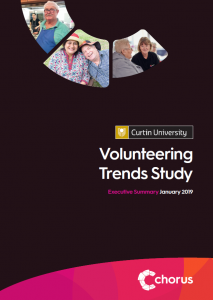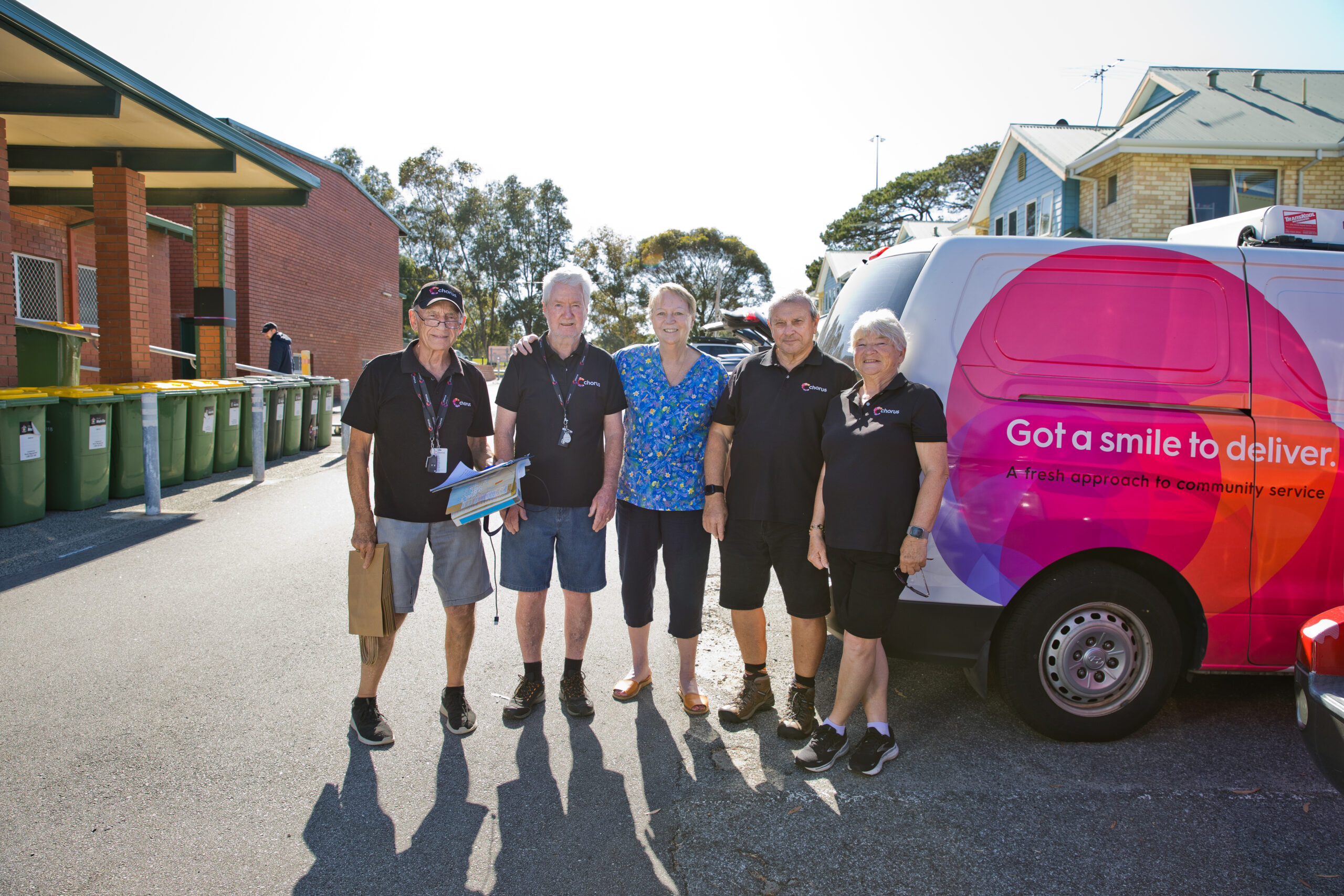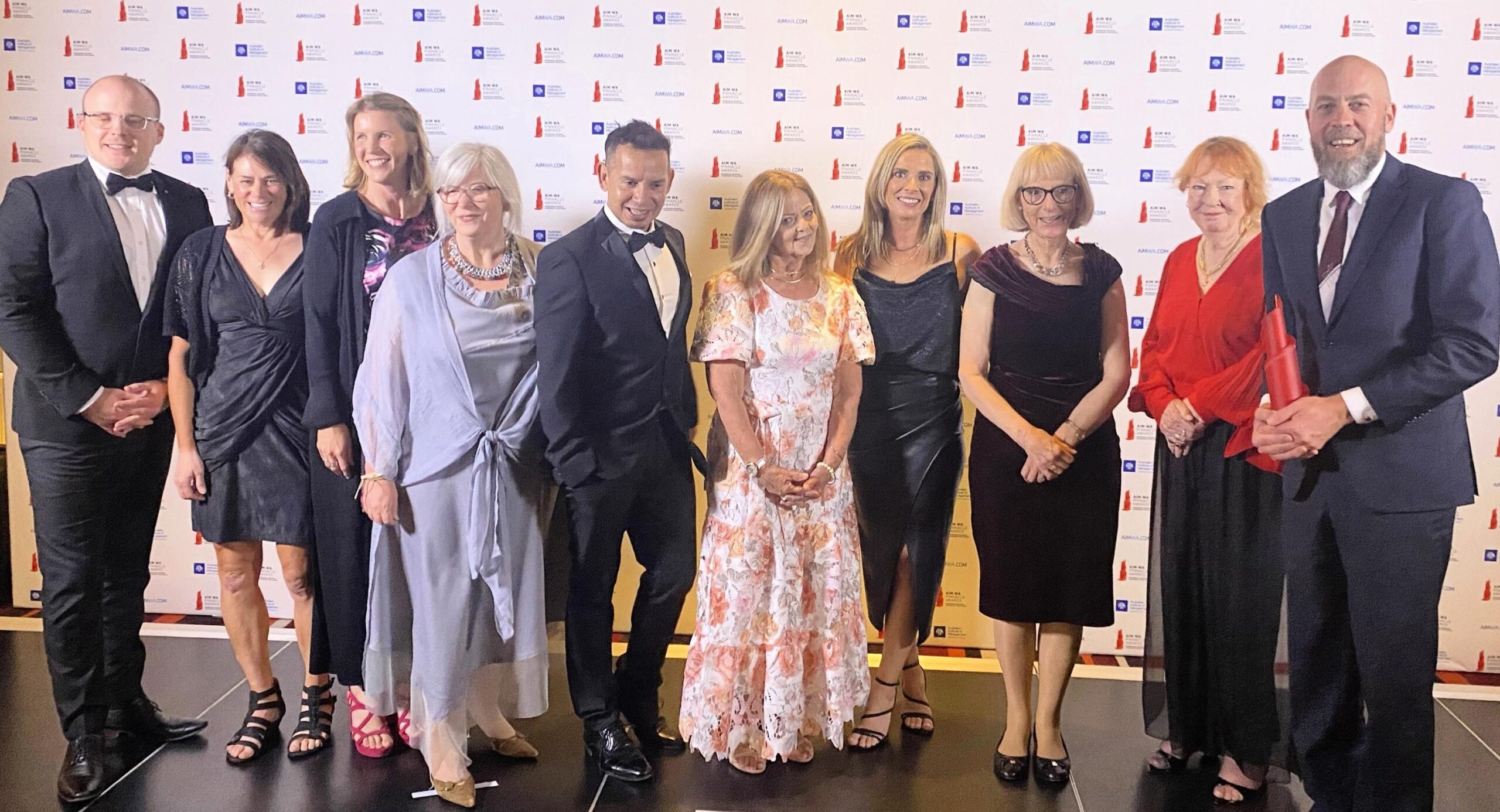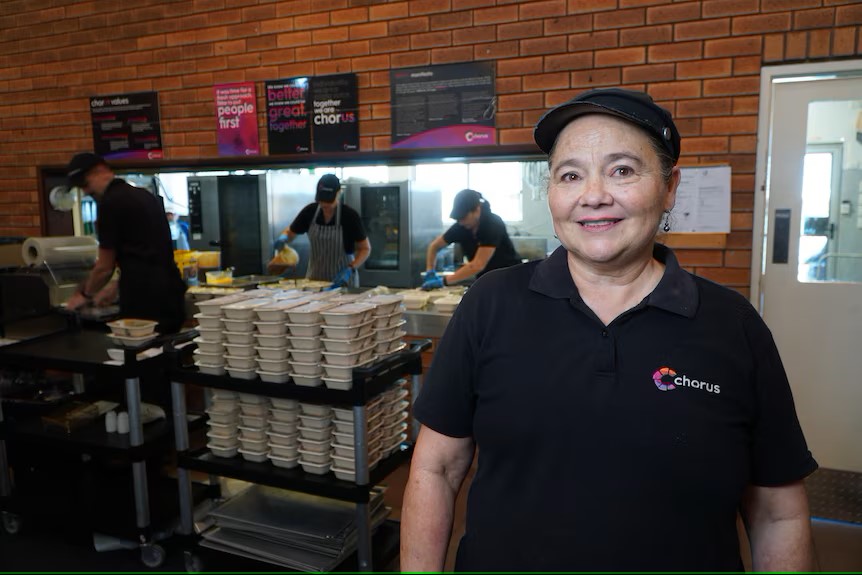New research has just landed and the volunteers of today are more motivated than ever, but their time is harder to capture. Chorus and Curtin University of Technology worked together to produce an Australian Volunteering Trends Study. The study was released earlier this year, and the knowledge around current volunteers has shown us the way when it comes to 2019 retention strategies, recruitment methods, and new ways to volunteer in the 21st century.
The statistics
We used previous years’ data from the Australian Census and the Australia Bureau of Statistics (ABS) for this study. We found that almost 1/5th of the adult population are formal volunteers, and that statistic is forecast as an upward trajectory.
- In 2016, 3.6 million Australians aged 15 years or older engaged in formal volunteering. That’s 19% of the population!
- In 2014, the most common reason to volunteer was to help others or the community, while more than half of volunteers identified personal satisfaction as their key motivator for volunteering.
- Volunteering is on the rise with a statistical increase of 1.2% since the 2011 Census.
- Women are more engaged in formal volunteering than men.
Things are changing
While volunteering statistics are certainly on the rise, the time people are dedicating to their volunteering efforts is less and they’re staying on board for shorter lengths of time. So, how do we get our volunteers to stay longer?
It’s all about generating feelings of acknowledgement and purpose, with a side of training. Our 2019 Trends Study uncovered that volunteers who feel valued, acknowledged, and appreciated are more likely to continue their work. They want their efforts to be recognised and to feel like they’re making a difference. But remember, everyone perceives rewards and recognition differently, so it’s important to tailor this response to each individual.
Then there’s purpose. If someone has a sense of purpose and feels connected to the organisation they volunteer for, with shared values and goals, they’re more likely to stay. Finally, those who receive training courses as part of their volunteering role are going to stay in that position for longer.
What to know about micro-volunteering
As far as volunteering trends go, micro-volunteering is 2019’s next big thing. It involves small groups of people working together to form part of a bigger project. This kind of volunteering does not ask for an alliance with a specific organisation and only requires people to donate no more than 60 minutes of their time. Virtual volunteering is another trend that is gaining traction in 2019, whereby people are using their computers and mobile phones to volunteer their time and their skills. These changes to the historic structure of volunteering mean that the new generation of time-poor, digitally savvy volunteers are finding a way to help that is comfortable for them.
The importance of inclusion and speedy inductions
Through the Chorus and Curtin University Volunteering Trends Study it was clear that people highly valued Chorus values. On the flip side, potential volunteers saw lengthy induction processes with large amounts of paperwork as barriers to recruitment. With this time-poor population, efficiency can be just as important as the roles they choose. 2019 volunteers are looking for targeted marketing that speaks to them and their skills. They’re far more likely to engage with an organisation if their skills are matched to a specific need that’s been identified. The study also highlighted that volunteers valued an opportunity to transition into different roles as their skills evolved and the needs of the organisation shifted.
Starting in school
Our 2019 study with Curtin showed that school students benefited by engaging in our volunteering program, particularly as it showed them the realities of teamwork and professional commitment. The classroom induction sessions and open Q&A sessions provided the students with a safe environment to learn about the opportunities, which reportedly reduced anxiety. Working with the schools has seen many 2018 and 2019 students continue their volunteering roles at Chorus once the course finished.
Using research to guide our future
The knowledge we’ve gained from the Volunteering Trends Study means that we’re now able to make informed decisions on the ground. We know our volunteers better and understand their needs and barriers to entry in 2019. To learn more about the Chorus and Curtin University of Technology Volunteering Trends Study click here






